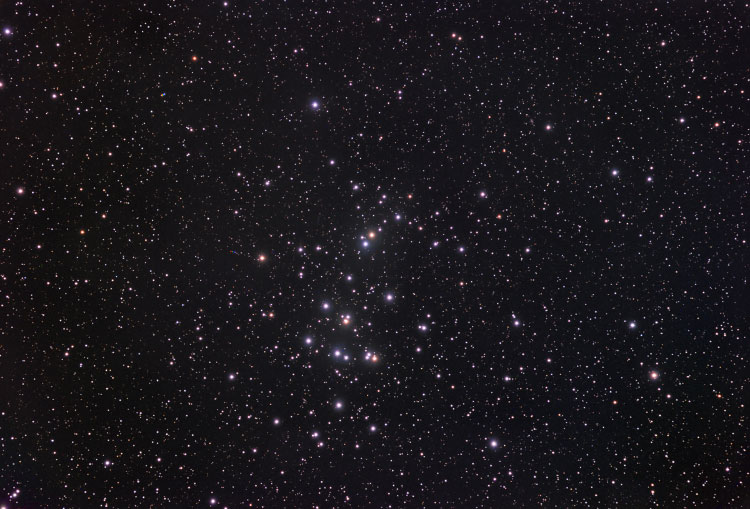
About this Image |
|
|
This famous cluster, M 44, is also called Praesepe (Latin for "manger"), or the Beehive cluster.
It is also one of the objects easily visible to the naked eye, and thus known since prehistoric times.
M 44 and the Hyades, another famous open cluster show the same motion and age, although now separated by hundreds of light years,
they seem to have a common origin in some great diffuse gaseous nebula which existed 700 to 800 million years ago.
Consequently, also the stellar populations are similar, both containing red giants (M 44 at least 5 of them) and some white dwarfs.
The distance to M 44 is 470 light years.
|
|
|
| Optics |
105mm TMB refractor with new TMB flattener at f/6.5 |
| Mount | MK100 GEM |
| Camera | SBIG STL-11000M at -30C, internal filter wheel |
| Filters | Astronomik LRGB |
| Date | Mar 08, 2005. |
| Location | Wildon/Austria |
| Sky Conditions | mag 5 sky, clouds, temperature 0 C, |
| Exposure |
LRGB= 30:30:30:30 min (10-minute sub-exposures)
all 1x1 bin. |
| Processing |
Image aquisition and color synthesis in Maxim DL 4.0; Image calibration, aligning, mean stacking, DDP in ImagesPlus; Photoshop: Levels, curves, color balance, Highpass filter; Noise reduction by Neatimage; |